Affiliate links on Android Authority may earn us a commission. Learn more.
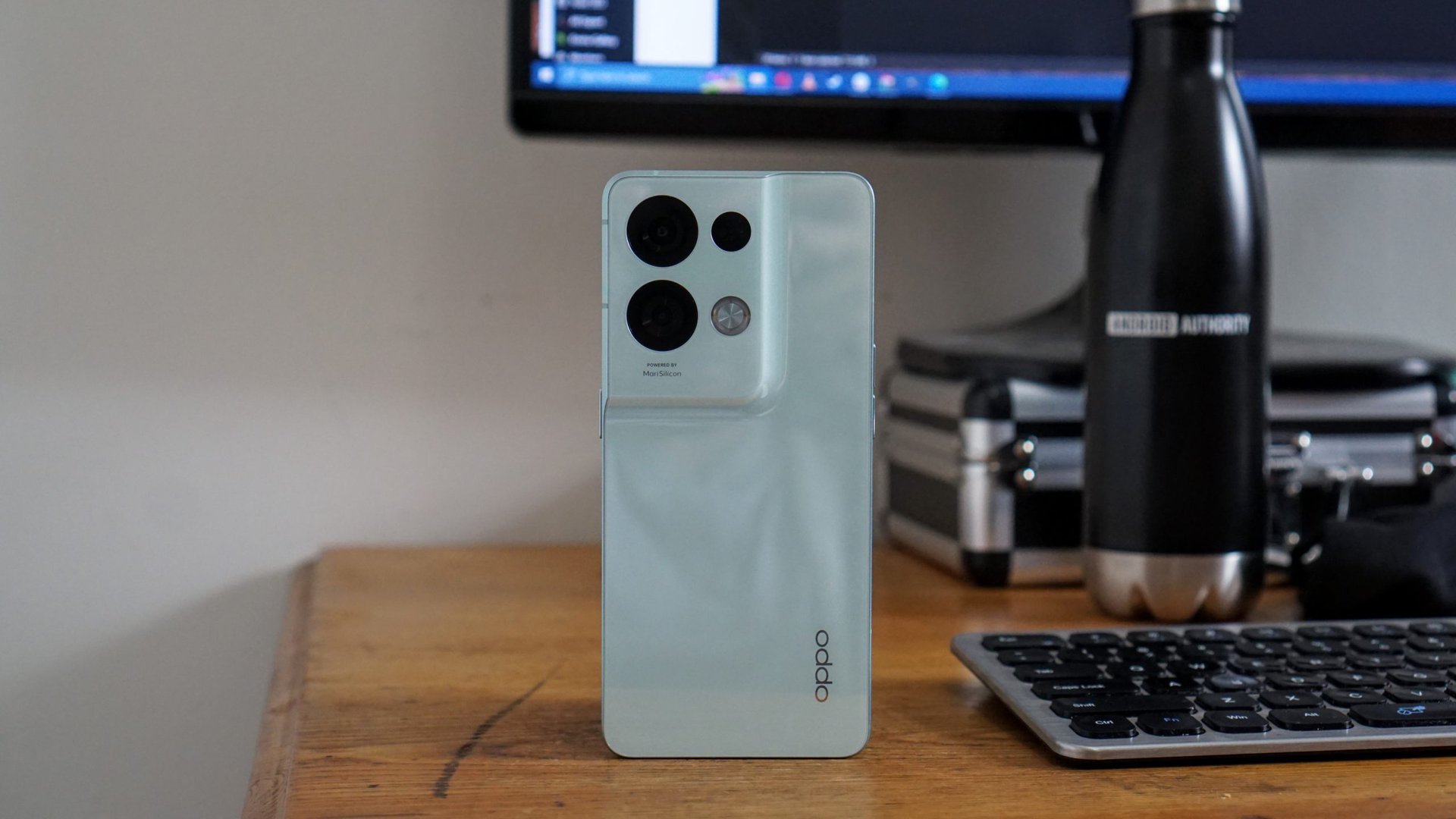
OPPO Reno 8 Pro review: Looks and brains, but what about value?
Published onSeptember 1, 2022
Oppo Reno 8 Pro
What we like
What we don't like
Oppo Reno 8 Pro
Oppo’s Reno series has been around for a few years now and, with a few exceptions, it’s stuck to the mid-range segment. The phones have generally prioritized a slick design over engaging in a specs war, but we thought last year’s Reno 7 Pro made too many cutbacks to justify the design and high price. Does its successor improve matters? Find out in Android Authority‘s OPPO Reno 8 Pro review.
Update, September 2022: This review has been updated with pricing and value comparisons following its release in the UK and other regions across Europe.
What you need to know about the OPPO Reno 8 Pro
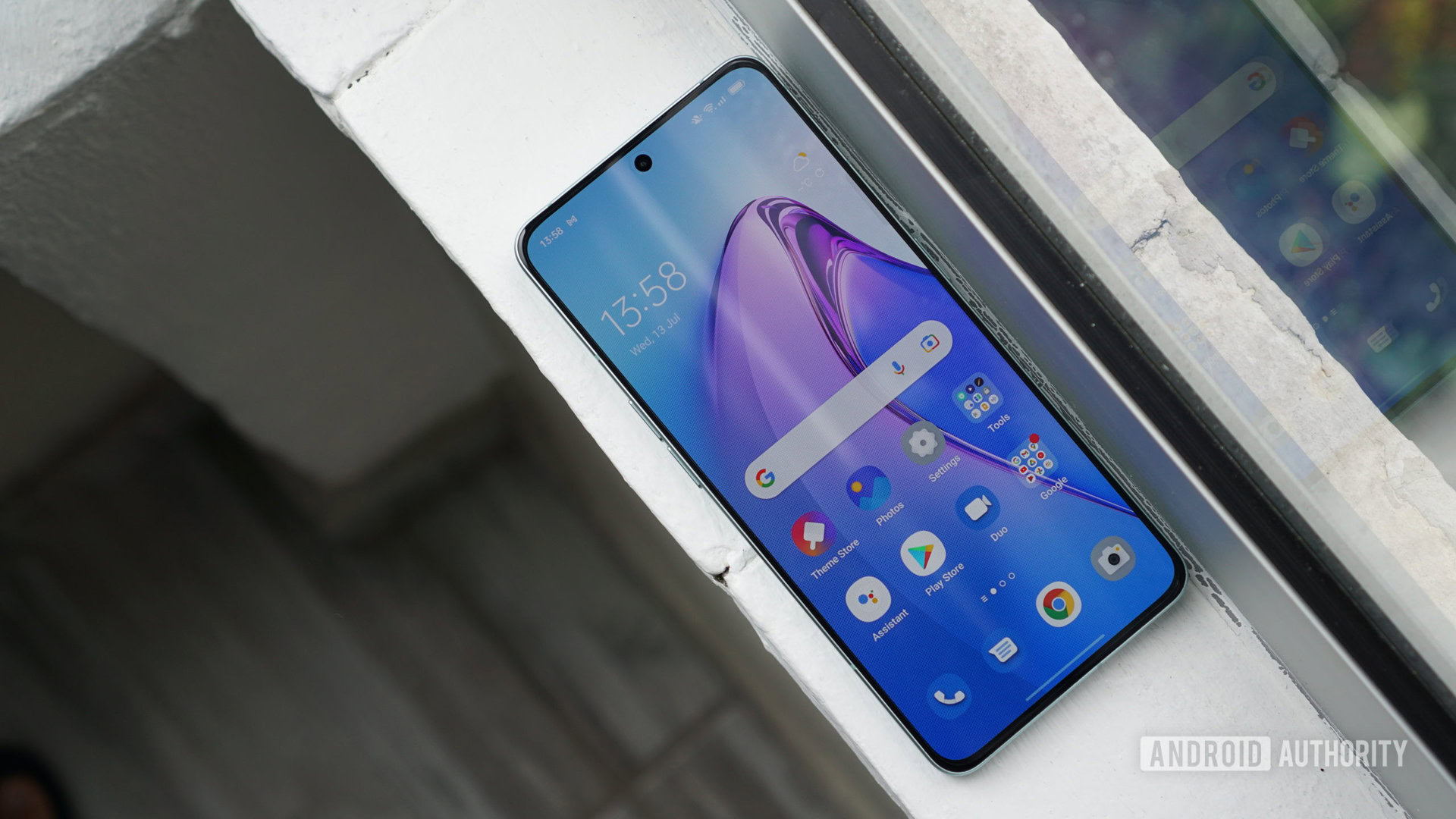
- OPPO Reno 8 Pro (8GB/256GB): £599 / €799 / Rs. 45,999
- OPPO Reno 8 Pro (12GB/256GB): Rs. 52,999
The OPPO Reno series is the Chinese brand’s signature mid-range family of smartphones, with the Reno 8 Pro being the latest device in the series to hit global markets. The series is generally known for marrying solid specs with a premium design, and the Reno 8 Pro is no different. One big design-related change compared to the Reno 7 Pro phone is that the rear RGB notification light around the camera system is gone.
Otherwise, you should expect a MediaTek Dimensity 8100-Max chipset, an FHD+ 120Hz OLED screen, and a 4,500mAh battery with 80W wired charging capabilities. The Reno 8 Pro also packs a triple rear camera system, consisting of a 50MP main camera, 8MP ultrawide lens, and 2MP macro camera. OPPO is also offering an IP54 rating, so while it won’t survive a prolonged dunk in water, should at least withstand some rain or a splash. It’s an improvement over the Reno 7 Pro which had no IP rating at all, but there are phones in its price tier that push to IP67.
The OPPO Reno 8 Pro looks to marry solid specs with a premium design.
It’s worth noting that the Reno 8 Pro in global markets differs somewhat from the Chinese model released earlier this year, packing the MediaTek chip instead of a Snapdragon 7 Gen 1 SoC seen in the Chinese variant. In fact, the global model seems identical to the Reno 8 Pro Plus that topped the series in China.
The Reno 8 Pro is available to buy in the UK and other European regions, as well as India. However, only the 8GB/256GB model seems to be available in Europe. OPPO has confirmed future launches for the Middle East, North Africa, and Southeast Asia. It comes in either Glazed Green (pictured here) or Glazed Black colorways.
What’s good?
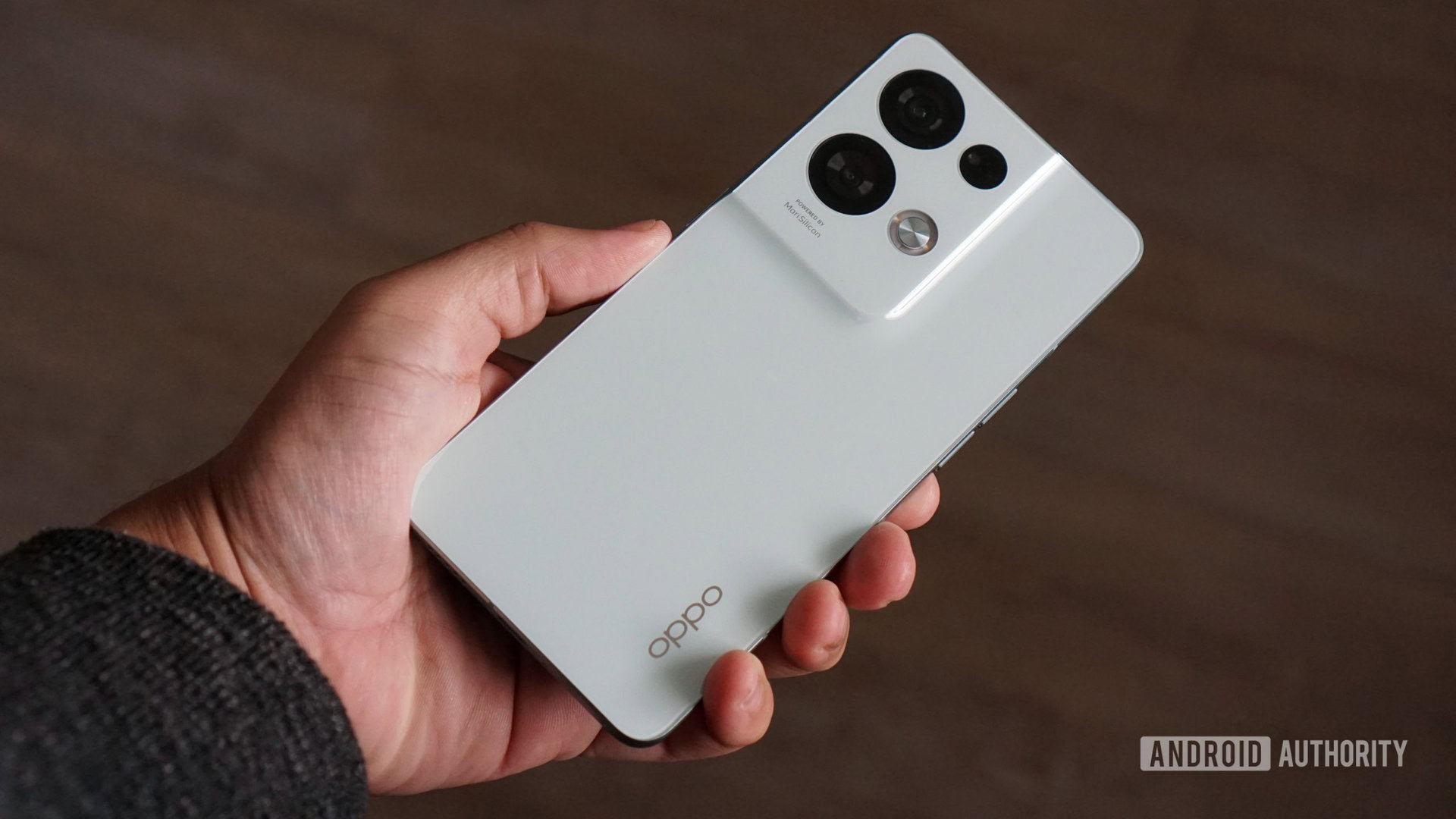
Straight out of the box, it must be said that the Reno 8 Pro’s design is easily one of the best things about it. It brings to mind the more premium OPPO Find X5 Pro when looking at the back, featuring a rear cover and camera bump made out of a single molded piece of glass. Toss in a flat screen, relatively lightweight body, and a flat metal frame, and you’ve got one of the better mid-range phones of 2022 from a design perspective. It also has Gorilla Glass 5 on the front and back, so the phone should be adequately protected from drops and knocks.
Turn the phone on, and you’ll be greeted by a pretty good 120Hz FHD+ OLED screen, getting bright enough for outdoor usage. The phone is set to a vivid color profile out of the box, but I didn’t find it oversaturated, and you can set it to the “natural” color profile instead. There’s also a color temperature slider if you find the display too cold or warm for your tastes. Interestingly, OPPO’s settings menu only notes 120Hz or 60Hz refresh rate options. There’s no mention of an adaptive refresh rate, but the 120Hz option is indeed adaptive (dropping to 90Hz or 60Hz).
The Reno 8 Pro is powered by the MediaTek Dimensity 8100-Max chipset. Geekbench shows that the phone has single-core CPU scores in the same range as the Snapdragon 870, while multi-core scores are in the same ballpark as some Snapdragon 8 Gen 1 phones. Meanwhile, GPU benchmarks show that the phone is ahead of the Snapdragon 870-toting POCO F4 and just behind the Snapdragon 888 series, but a long way off Snapdragon 8 Gen 1 phones. The phone still delivers very impressive stability under stress, and it only ever got warm instead of hot. In other words, the Reno 8 Pro can duke it out with upper mid-range devices and older flagships just fine.
Real-world performance is nothing to scoff at, either. Swiping through menus, switching between apps, and general scrolling were all handled very smoothly. Games like Call of Duty Mobile, Genshin Impact, and Apex Legends all ran at a fluid pace. The phone is even able to handle demanding GameCube and PS2 games via emulation if that’s something you’re into.
Once you’ve exhausted the phone’s battery, you’ll be glad to know that it packs 80W wired charging via an included charger. We saw a full charge in around 40 minutes, which isn’t the absolute fastest around but is still very speedy. Best of all, OPPO claims that the Reno 8 Pro’s battery degrades to just over 80% capacity after 1,600 charging cycles or roughly four years. If this turns out to be accurate then it’s a pretty impressive achievement. We’ve seen many phones hit similar reductions in around half the number of charging cycles. OPPO’s phone also supports standard fast charging via third-party chargers, just in case you don’t have the proprietary 80W brick on hand.
The OPPO Reno 8 Pro can handle pretty much anything you throw at it, while 80W charging means you'll be back in action in no time flat.
The Reno 8 Pro delivers pretty solid endurance in the first place, too. I managed to get almost seven hours of screen-on time over two days. This period of usage consisted of watching YouTube videos, using the camera app on and off one morning, about 20 to 30 minutes of gaming, and browsing Reddit. Heavier usage got me over five hours of screen-on time. That’s still a respectable level of endurance, and more typical usage means you’ll only have to charge every other day.
It must also be said that Color OS has gradually become one of the better third-party Android skins on the market. The skin has plenty of handy features and great scope for customization (e.g. changing icon shapes, system colors, icon name sizes). There’s also the ability to hide banner notification details when someone else is looking at your phone or hide the content of alerts by default when it’s unable to see your face (e.g. in the dark). Mercifully, I never saw ads on the device, which is a vast improvement over what we saw on the Reno 7 Pro, though this may vary by region. The software isn’t perfect, owing to a few perplexing decisions and some gimmicky features, but more on the downsides in a bit.
One other aspect I really appreciated was the phone’s in-display fingerprint sensor. I still can’t wait for Qualcomm’s 3D Sonic Max tech to come to more phones, but this is about as good as it gets for a conventional optical in-display fingerprint sensor right now as I found it to be extremely quick and very accurate.
What’s not so good?
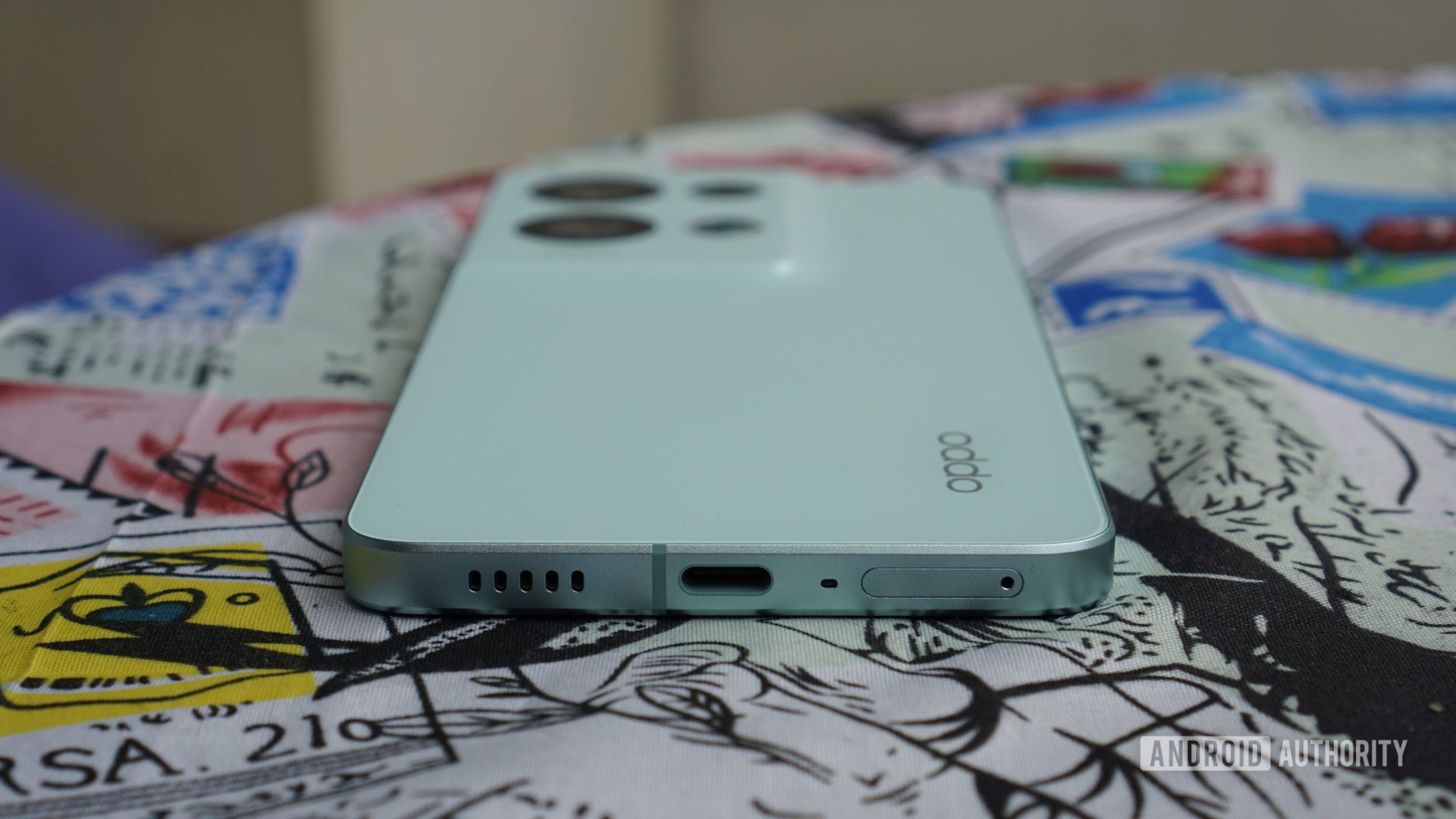
Color OS is great in terms of aesthetics and customizability, but the default system behavior could use some tweaks. For one, the app drawer is disabled out of the box. It’s the kind of iPhone-wannabe move you’d expect to see on a Chinese smartphone back in 2015 rather than 2022.
The Reno 8 Pro’s software also has some pre-installed bloatware. This includes Facebook, InDriver, LinkedIn, ShareIt, Snapchat, and Viu. You also have some OPPO apps too, such as Clone Phone, O Relax, and Soloop (a video editor). Like the lack of ads, the quantity of bloat may vary depending on your region, but at least on our unit most (but not all) of these apps could be uninstalled.
Oppo’s software has a few interesting albeit gimmicky features on tap too. There are TouchWiz-style hands-free gestures for pausing video playback or scrolling through a page. Both of these features were extremely unreliable at first, and I only really got the scrolling gesture working with any sort of regularity. Unfortunately, scrolling is limited to YouTube, TikTok, Instagram, and Facebook — why not the web browser?
OPPO confirmed to Android Authority that the phone would only receive the standard two OS updates and three years of security updates. This is quite disappointing when devices like the Samsung Galaxy A53 5G, Google Pixel 6a, and even the Nothing Phone 1 receive three or more OS upgrades and four or more years of security patches.
The Reno 8 Pro has some bloatware issues and a middling update promise.
The Reno 8 Pro also offers a pair of speakers, delivering more than enough volume for music and podcasts. However, they’re pretty imbalanced as a noticeable amount of volume is generated from the bottom-firing speakers.
OPPO Reno 8 Pro camera review
If there’s any area where you should feel the Reno 8 Pro’s mid-range trappings, it’s in the camera field. But the good news is that the primary camera generally delivers in most conditions. The dark areas in daytime scenes can be pretty grainy on the odd occasion, but I found that images were usually sharp, with vivid colors, and reliable focusing. The pleasant primary camera performance extended to low-light conditions too, still offering plenty of detail, a bright image, and reduced levels of noise.
The bad news? Well, the secondary rear cameras fall way below expectations. That 8MP ultrawide camera is your run-of-the-mill budget shooter. Expect a major increase in noise as well as completely different colors compared to the main camera. While the primary camera delivers saturated colors, the ultrawide shooter goes for drab hues. It doesn’t help that images taken with the ultrawide can sometimes look horribly oversharpened even in ideal conditions. Check out the two rocky seaside shots below to see the major differences between the two cameras. Meanwhile, the 2MP macro lens is a token shooter that delivers soft, low-detail results even in good lighting.
Switch to the front and OPPO is touting a 32MP selfie camera using the IMX709 RGBW sensor and also packing autofocus as a welcome extra. Fortunately, the selfie camera offers some detailed images with wide dynamic range and little in the way of noise during the day. In fact, the selfie camera is capable of some solid shots in mixed lighting, too, only really falling apart in near-darkness due to aggressive noise reduction.
OPPO also made a big deal of the fact that its new mid-ranger is equipped with its in-house MarisiliconX imaging chip. The company says the chip is responsible for reducing noise and improving dynamic range when shooting low-light 4K video or 4K HDR content. Video quality is pretty good in our experience, offering vivid colors, smooth frame rates when shooting at 60fps, and satisfyingly wide dynamic range. The phone tops out at 4K/30fps, though, which is a big step behind the best budget camera phones. Likewise, the included Ultra Steady mode does a good job of reducing judder but understandably tops out at 1080p/60fps.
The Reno 8 Pro doesn’t have the most impressive variety of camera modes, but what’s here is good. Standard fare like a night mode, portrait mode, pro camera, and panorama are joined by a few extras. This includes time-lapse functionality, slow-mo, a pro video mode, super steady video, video bokeh, and dual-view video.
OPPO Reno 8 Pro specs
| OPPO Reno 8 Pro | |
|---|---|
Display | 6.7-inch Super AMOLED FHD+ 2,412 x 1,080 120Hz refresh rate |
Processor | MediaTek Dimensity 8100 Max |
RAM | 8GB/12GB RAM |
Storage | 256GB |
MicroSD | No |
Battery | 4,500mAh 80W wired charging (66W in Latin/North America, Taiwan) No wireless charging |
Cameras | Rear: 50MP, f/1.8, 1/1.56", IMX766, PDAF 8MP ultrawide, 1/4-inch, IMX355, 112 degree field-of-view 2MP macro, f/2.4 Front: 32MP, f/2.4, IMX709, autofocus MariSiliconX imaging chip |
Connectivity | Wi-Fi 6 Bluetooth 5.3 NFC |
Operating System | Color OS 12.1 Android 12 |
Security | In-display fingerprint sensor, face unlock |
Color | Glazed Black Glazed Green |
Dimensions and weight | 161.2 x 74.2 x 7.34mm 183g |
OPPO Reno 8 Pro review: The verdict
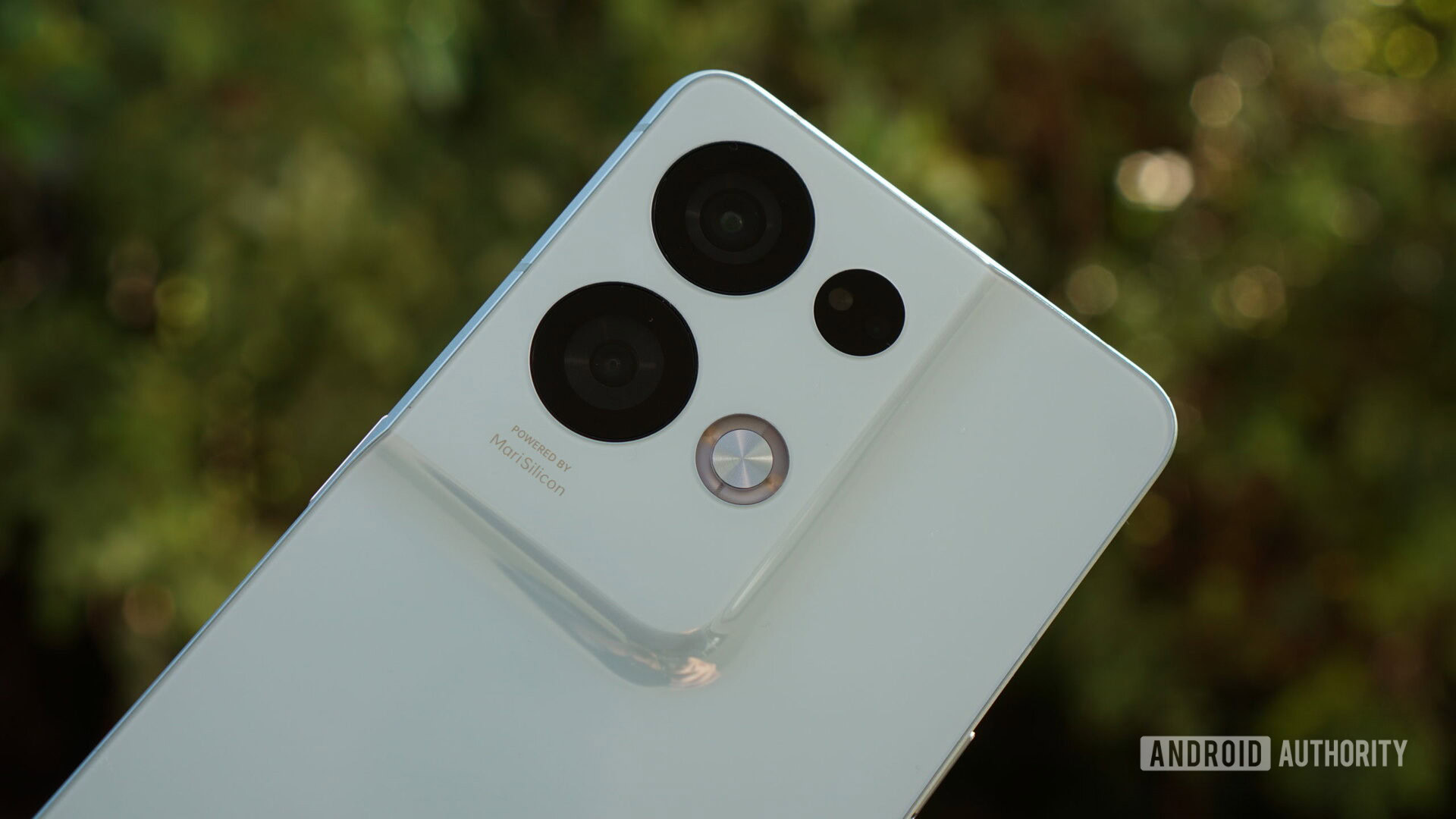
The OPPO Reno 8 Pro continues the BBK brand’s tradition of offering standout designs at a mid-range price. But it’s more than just a feast for the eyes, packing plenty of power, respectable battery life, fast charging, and a capable main camera.
Unfortunately, the phone has a few drawbacks that really shouldn’t be expected if you’re paying £600 on a smartphone. Wireless charging would be nice, even if some devices in this price bracket don’t have it. But IP67-68 water resistance has quietly become a fixture in this price segment while some cheaper mid-rangers also pack the option these days. Splash resistance just doesn’t cut it anymore when you’re frankly paying flagship money for a smartphone.
Likewise, the low-effort secondary cameras and a middling update pledge are also major disappointments for the amount of cash you’re paying. These downsides are also galling in light of the fact that the Reno 8 Pro is actually more expensive than its already-expensive predecessor. Unfortunately for OPPO, the competition is also stronger than ever.
The Reno 8 Pro gets a lot right, but it should offer much more for the price.
Coming it at the same price is the phone’s main competitor: the Google Pixel 6 (£599). In fact, the standard Pixel 6 retails for €649 in some regions, making it much cheaper than the Reno 8 Pro in other European countries. Overall, the Pixel 6 is just an outright better handset and remains one of the best value phones you can buy. Meanwhile, if you’re craving power, the OnePlus 10T (£629) is unpolished but provides a massive performance boost with its Snapdragon 8 Gen 1 Plus chipset.
Things get even tougher for the Reno 8 Pro when you compare it to even cheaper phones, though. Perhaps the most widely available alternative to the OPPO Reno 8 Pro is the Samsung Galaxy A53 5G (£399). Samsung’s mid-ranger brings an IP67 rating, a more impressive update pledge, and a sharper ultrawide camera. You do, however, miss out on faster wired charging speeds, while the Exynos 1280 is a solid chipset but still some way off the Dimensity 8100-Max.
The POCO F4 (£379) is another phone worth looking at if you’re on the hunt for alternatives. It has a much cheaper price tag than OPPO’s phone, while the Snapdragon 870 still delivers a great level of performance. The two phones also have plenty in common, such as similar battery sizes, rapid wired charging, splash resistance, and 120Hz FHD+ OLED screens. Similarly, the POCO X4 GT (€379), released as the Redmi K50i in India, is another Reno 8 Pro alternative you should keep in mind if you want plenty of power for the price, plus a faster refresh rate display and a larger battery. However, you’ll have to make do with an LCD screen, a less premium design, and a less competitive main camera.
Don’t miss: The best phone deals
Don’t mind trying a brand new manufacturer? Then the Nothing Phone 1 (£399) might be up your alley. Nothing’s first phone nails the Reno 8 Pro’s main strength of delivering great design in the mid-range space. It also packs a few advantages over the Reno 8 Pro such as wireless charging, a longer update commitment, and a cheaper price tag. In saying so, OPPO’s phone offers faster wired charging, more software features, and improved performance.
Finally, Google’s Pixel 6a (£399) is another cheaper device worth considering instead. The phone packs a pretty beefy Tensor chipset, a dual-camera setup powered by Google’s acclaimed software, a longer update commitment, IP67 rating, and Pixel-exclusive software features. And it’s significantly cheaper than the Reno phone. Unfortunately, the Pixel 6a lacks fast wired charging and a high refresh rate display you get on the Pixel 6.

Top OPPO Reno 8 Pro questions and answers
Yes, the OPPO Reno 8 Pro has an IP54 rating.
No, the Reno 8 Pro does not have a headphone jack.
The Reno 8 Pro has Gorilla Glass 5 on the front and back.
The Reno 8 Pro supports sub-6GHz 5G.